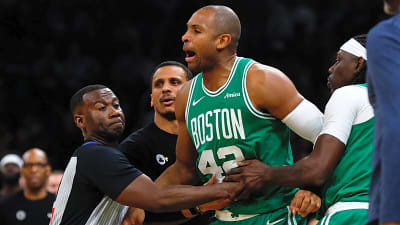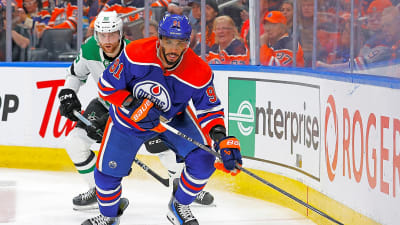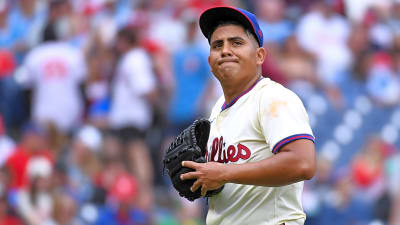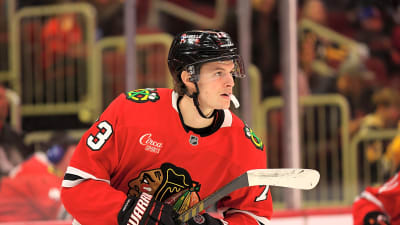
HOUSTON — The landscape of college basketball continues to evolve and shift for HBCUs, which continue to spiral from the effects of NILs. HBCU Legends spoke with Texas Southern head basketball coach Johnny Jones about the decreasing opportunities for HBCU basketball players hoping to "shoot their shots" at an NBA career.
The NBA Draft: A Hard Road for HBCU Players
"I think the hard part is finding that "diamond in the rough" like you used to," Coach Johnny Jones said. "Before the days of, I guess, with the social media and all the camps and everything that's ongoing, there may have been someone there that you could get that could really blossom as a freshman that people may not have seen or heard about, and then they could put themselves in position to possibly be considered even for the draft."
It's been more than a decade since an HBCU player (Kyle O'Quinn in 2012) heard their name called in the NBA draft. Coach Jones noted that opportunities for discovery have diminished despite Travis Williams' efforts to showcase HBCU basketball talent over the past four years at the HBCU All-Star Games.
With the mushrooming of scouting opportunities, camps, and AAU circuits fueled by social media, most elite prospects are snatched early by power conference programs.
But recent years have seen even top Power 5 talent slip through the cracks, with Jones citing players like Alabama's Sears and Arizona's Love as high-profile examples who didn't get drafted despite immense exposure. With just 60 spots in the NBA draft — and the increased focus on international pros — HBCU hopefuls face "even more difficulty," Jones said.
"I just think it's going to have to be one of those guys that come up and have an exceptional season and get a great deal of exposure from that season that they're at the school because if they last, unfortunately, if they're good enough, they certainly won't be at the school for two years because you get that type of exposure because of the new age of NIL."
International Competition and the Changing Talent Pool
The NBA's widening global approach is yet another obstacle. Jones noted that international players often face a different development curve—many play professional-level basketball as teenagers, giving them an advantage in terms of maturity and skill.
"You had some guys opt not to even put their name in the draft this year because they have an opportunity to excel and do well at the colleges that they're at, especially if it's one that have the ability to take care of guys with the NIL that they have available to them now." - Johnny Jones
With the lure of NIL deals, international players now even come stateside to play college basketball before hopping into the draft, squeezing an already bottlenecked pipeline even tighter for HBCU players.
The Double-Edged Sword of NIL
NIL rules have revolutionized the college sports landscape, but for HBCUs, it's a double-edged sword. Years ago, an athlete might have stayed and built a name and legendary career at one school. Today, if an HBCU player has a breakout year, it's likely major programs with deeper NIL pockets will woo them.
One recent case study is Blake Harper at Howard University. Harper was a phenomenal player during his freshman season in 2024-25, making it almost impossible for the Bison to keep him in their locker room.
Creighton won the sweepstakes for his services, and Harper is headed to Nebraska.
"It's extremely difficult," Jones admitted, to keep top talent. Yet, he also sees these transfers as opportunities to showcase HBCU development success, which can help attract the next wave of recruits.
"Programs got to be proactive and I think at the same time be creative in a sense of what they can do to try and have the ability to have some type of NIL or collective, so to speak, at their representative at certain schools," Coach Jones shared.
Developing Pathways On and Off the Court
Coach Jones emphasizes that academics remain the priority for the student-athlete. The "main thing is still the main thing," he noted. The percentages are low for most collegiate athletes to transition to the NBA as professionals. Thus, how are the coaches preparing their players for life after collegiate sports? Leveraging the surrounding community and networking.
"People come to Houston to make it their home. It's not one of those places you pass through," Jones stated.
Leveraging Houston's rich network of professional athletes and business leaders, Texas Southern, for example, is committed to exposing students to real career possibilities—before and after their playing days.
Building for the Future: Team Chemistry and Player Development
Looking ahead to the 2025–26 season, Jones expresses optimism about his new recruits and returning players. Even as they fill gaps left by key losses and brace for a demanding non-conference schedule — including heavyweights like Gonzaga and Texas A&M — he believes the team's chemistry and collective ethos will be a difference-maker.
"We couldn't be happier. You know, a lot of times it's hard and difficult to get high school kids, but when you get a kid on that level that is making that type of impact and in high school come from a very short high school program, had a teammate that was obviously being looked at a lot of coaches in their gym night in and night out. And LJ was one of those guys that did a tremendous job of holding his own in every game."
The Texas Southern basketball staff's commitment extends beyond the court to include professional development, with initiatives focused on social media branding, NIL education, and post-basketball career guidance.
It's a complex tapestry of issues HBCU basketball faces. The fierce competition for talent and the lack of resources to remain competitive will always be a challenge for our HBCU student-athletes.
However, through ingenuity, visibility campaigns, and a relentless focus on education, HBCUs can remain a beacon for student-athletes with big dreams—on and off the basketball court.
JOIN OUR NEWSLETTER
HBCU LEGENDS PODCAST
More must-reads:
- Rockets to sign former No. 3 pick to five-year extension
- Where the NASCAR Cup Series playoff picture sits after Atlanta
- The 'NFL head coaches' quiz
Breaking News
Trending News
Customize Your Newsletter
 +
+
Get the latest news and rumors, customized to your favorite sports and teams. Emailed daily. Always free!








